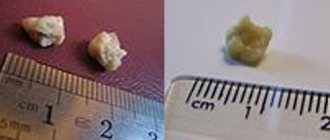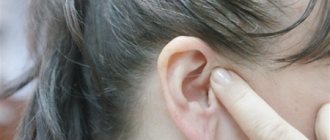What is saliva for?
The salivary glands in the mouth produce a slightly acidic secretion (as a rule, in the daytime the process is more intense - most of the daily norm is produced, while during the hours of night rest it is characterized by a slowdown), which performs a complex function. Salivary fluid, due to its composition, is required in order to:
- disinfect the oral cavity - reduces the likelihood of developing diseases such as periodontal disease or caries;
- participate in digestion - food moistened with saliva during the chewing process is absorbed better when it enters the stomach;
- enjoy food - for food to reach the taste buds at the root of the tongue, it must be dissolved in the salivary fluid.
Causes of postnasal drip
The causes of constantly accumulating mucus in the throat can be infectious or non-infectious. These include:
- Inflammatory diseases of the nasopharynx and larynx (sinusitis, pharyngitis, laryngitis). The increased production of mucous secretion during this period is associated with the body’s attempt to clear the airways of bacteria and viruses, thereby speeding up recovery. The fact that mucus is secreted abundantly in this case, on the contrary, is a variant of the norm. Such mucous masses do not interfere, but help get rid of pathogens.
- Chronic diseases of the upper respiratory tract. These diseases cause inflammatory processes in the nasopharynx, resulting in the formation of a constant source of infection here.
- Diseases of the lower respiratory tract (bronchitis, pneumonia, tuberculosis).
- Allergic reactions to an external irritant. An allergy can be accompanied by a copious accumulation of phlegm, which is annoying and makes you want to constantly swallow it.
- Disorders of the gastrointestinal tract, in which the contents of the stomach are thrown back into the esophagus and further into the pharynx (gastroesophageal reflux disease, gastritis, ulcer).
- Features of the structure of the nasal cavity (curved nasal septum, enlarged nasal turbinates).
- Adenoids.
- Poor nutrition - eating too fatty or spicy foods irritates the gastrointestinal tract and can provoke increased secretion production.
- Bad habits. Tobacco smoking and alcohol abuse lead to burns of the pharyngeal mucosa. The body tries to get rid of the harmful effects of harmful substances by intensively producing mucous masses.
- The entry of foreign objects into the nasal cavity is a common cause of the accumulation of mucous masses in the throat of children, since children, while playing, can insert beads, small parts of toys, etc. into the nasal passages.
- Poor environmental conditions in the place of residence - polluted air and dust. In this way, the body tries to get rid of harmful particles trapped in the air.
The sooner the cause of this condition is determined, the sooner effective treatment for the throat will be prescribed and carried out.
How to determine the degree of viscosity of saliva?
Most often, a person notes that saliva has become too viscous, based on subjective sensations. This can only be determined accurately in laboratory conditions.
In a normal state, the indicator can fluctuate in the range from 1.5 to 4 cp - measured relative to distilled water.
In laboratory conditions, a special device is used to carry out this procedure - a viscometer. At home, you can determine how viscous a person’s saliva is using a micropipette (1 ml):
- draw 1 ml of water into the pipette, holding it vertically, record the volume of liquid that flows out in 10 seconds, repeat the experiment three times;
- sum up the volume of leaked water and divide it by 3 - you get the average volume of water;
- do a similar procedure with salivary fluid (you need to collect saliva in the morning on an empty stomach);
- sum up the volume of leaked water and divide it by 3 - you get the average volume of saliva;
- The ratio of the average volume of water to the average volume of saliva is an indicator of how viscous the consistency of saliva is.
Preventing the formation of mucus in the throat
Prevention of excessive mucus formation in the throat consists of following basic rules:
• Drink as much fluid as possible every day to avoid suffering from thickened mucus. You should start the day with a glass of warm water with the addition of natural honey.
• Try to maintain a normal level of humidity in the apartment or work area.
• Regularly carry out water procedures and observe the rules of personal hygiene.
• Give up existing bad habits.
• Hum various melodies with your mouth closed as often as possible, the vibrations of your voice will help with the discharge of phlegm.
• During the peak of colds, use pharmaceutical oxolinic ointment.
• Physical activity, improving immunity with vitamins.
• Stay away from dyes, household chemicals and toxic fumes.
• Visit an ENT doctor at least once a year.
• Raise the head of the bed a little.
• Avoid stressful conditions, unnecessary worries and worries.
The accumulation of secretions in the nasopharynx in most cases indicates the presence of a disease or allergy. It is necessary to find out the causes as quickly as possible and begin treatment.
Source: zhenskoe-mnenie.ru
Reasons why saliva in the mouth is very thick
In a healthy person, saliva is a clear, slightly cloudy, odorless liquid that does not cause irritation. Any deviations from the norm act as evidence of dysfunction of any organs or systems. Why an adult’s saliva thickens, foam or even blood comes out of the mouth - the reasons can be different - from banal dehydration to serious pathological conditions.
Xerotomia is one of the most common reasons for thick drool. It is accompanied by severe dryness of the oral cavity, a burning sensation may be present (some patients complain that saliva “pinches” the tongue), and sometimes there is soreness and pain in the throat. It appears as a result of the development of pathologies.
Disorders of the salivary glands
In the morning, very thick drool or foamy mucus appears in the mouth and lips, which also stings the tongue - often the reason lies in the disruption of the corresponding glands. When a person’s salivation process is impaired, dry mouth, lips and mucus will be constantly present. One of the following reasons can lead to this condition:
| Cause | Description | Note |
| Diseases of the salivary glands | They enlarge and become painful. Saliva production decreases / we are talking about the extinction of this function | Mumps, Mikulicz's disease, sialostasis |
| Surgical removal | The salivary glands may be removed. | Sialadenitis, salivary stone disease, benign tumors, cysts |
| Cystic fibrosis | Pathology affects the exocrine glands | Genetic disease |
| Scleroderma | The connective tissue of the mucous membranes or skin grows. | Systemic disease |
| Injury | A rupture of the ducts or tissue of the gland occurs. | May be an indication for surgical removal |
| Retinol deficiency | Epithelial tissue grows, the lumens of the salivary gland ducts may become blocked | Retinol = vitamin A |
| Neoplasms in the oral cavity | May affect salivary glands | Parotid and submandibular glands |
| Damage to nerve fibers | In the head or neck area | Due to injury or surgery |
| HIV | The function of the glands is inhibited due to infection by the virus | General exhaustion of the body |
Dehydration
Dehydration is the second most common cause of thick saliva. It results from insufficient fluid intake and excessive sweating. Intoxication of the body has a similar effect. Heavy smokers often face this problem. If the only symptom is thick saliva, then we are talking about dehydration.
Other causes of sticky and stringy saliva
Sticky and viscous salivary fluid with a viscous consistency can be a symptom of a number of pathological and natural conditions of the body. Women often encounter this phenomenon during pregnancy - due to an imbalance of microelements, water-salt imbalance, frequent urination, gestosis or hyperhidrosis. Changes in saliva viscosity can be caused by:
| Disease | Additional symptoms | Notes |
| Chronic sinusitis | Thick sputum, bad breath, headaches, fever | Post nasal drip |
| Candidiasis | In the mouth or on the lips - mucus, plaque or whitish spots | Fungal disease |
| Flu/respiratory infection | Symptoms of a cold | — |
| Autoimmune pathologies | Diagnosed by blood test results | Sjögren's disease |
| Seasonal allergies | Appears in autumn/spring, rash, sneezing | Pollen is often an allergen |
| Gastroesophageal reflux disease | Periodic release of acid from the stomach into the oral cavity | It occurs in those who have undergone gastrointestinal surgery or who are overweight. |
| Endocrine system diseases | Often accompanied by thick saliva and dry mouth | Any hyperglycemic conditions |
| Gastrointestinal pathologies | Saliva is affected by increased acidity or gas production | Gastroenteritis |
When a foreign body sensation is combined with a sore throat
The appearance of a sore throat and lump is characteristic of the following pathologies:
- Acute tonsillitis, which is manifested by fever, weakness, and sometimes nausea. The throat hurts, it hurts to swallow both liquid and solid food.
- Acute pharyngitis, which often occurs with acute respiratory infections (viral, fungal or bacterial origin). It manifests itself as a sore throat, a feeling of mucus, soreness and a lump in it, and a dry cough.
- Acute laryngitis, which can also be a manifestation of acute respiratory infections or occur due to hypothermia and excessive use of the voice. It manifests itself as hoarseness of the voice, pain in the throat, which may intensify when swallowing, a feeling of dryness, soreness, and scratching in the throat. The cough is dry and painful at first, but soon phlegm begins to be coughed up.
- Peritonsillar abscess - impregnation of fiber near the tonsils (most often one) with pus. Develops as a complication of purulent tonsillitis or purulent pharyngitis. Manifested by increasing sore throat, fever, difficulty swallowing, and bad breath.
- Parapharyngeal abscess. In this case, the abscess is localized in the peripharyngeal space. This, like a paratonsillar abscess, is a complication of purulent tonsillitis, but it can also develop due to the flow of pus from the nasal sinuses into the peripharyngeal tissue, or the ingress of pus from the roots of the teeth. It is characterized by pain on one side of the throat, painful swallowing, difficulty opening the mouth, and high fever. It requires urgent surgical intervention, otherwise it may be complicated by the breakthrough of pus into the tissue around the large vessels of the neck, which may result in severe bleeding.
- An abscess of the root of the tongue is characterized by a sensation of a lump in the throat, an increase in the volume of the tongue, which prevents it from fitting in the mouth and makes breathing difficult and speech slurred. The temperature rises, weakness and malaise appear, and sleep is disturbed. Urgent treatment is required in the ENT department of the hospital.
- Inflammation and abscess of the epiglottis are manifested by a sensation of a foreign body in the throat, pain in the throat, which increases with swallowing, increased body temperature, difficulty breathing, and a nasal voice.
We suggest that you familiarize yourself with Gum incision - Medical advice
Treatment of diseases of the salivary glands
To develop an effective treatment strategy, it is important, first of all, to diagnose the original source of the pathological condition.
If the problems are caused by infectious or fungal diseases, inflammatory processes, then the main pathology is treated first, after which they begin to normalize the function of the salivary glands.
The doctor also offers the patient symptomatic treatment:
- oral moisturizers/artificial saliva (in gel or spray form);
- medicinal candies or chewing gums;
- special rinses;
- chemicals (if saliva is not produced);
- correction of drinking regime.
How to get rid of discomfort?
If the increase in saliva thickness is associated with temporary hormonal imbalances, the problem does not require drug treatment, since it will disappear on its own after some time. If there are serious diseases, it is necessary to carry out their timely treatment.
In other cases, the condition can be alleviated using the following procedures:
- Rinse . The rinse is selected exclusively as prescribed by a doctor. Sometimes it is enough to use a soda-salt solution or a decoction of medicinal herbs. If it is necessary to eliminate the symptoms of laryngitis, you cannot do without more serious antiseptics, which include Hexoral.
- Moistening the throat . To normalize the moisture of the mucous membrane, saliva substitutes are used. They are available in the form of sprays, drops or gel, which should be used every morning. Often their composition is additionally enriched with antibacterial components, which eliminate harmful microorganisms that colonize the mouth.
- Help with expectoration . To increase the production and dilution of sputum, they are used as pharmaceutical and natural mucolytics. Their appointment is scheduled individually.
- Using chewing gum. Short-term chewing of sugar-free gum stimulates the production of salivary fluid while simultaneously cleansing the mouth of food debris.
To prevent dry mouth, it is recommended to stop smoking and also monitor the body’s water balance. Frequent walks in the fresh air and regular ventilation of the bedroom are also useful.
Source: skzub.ru
Traditional methods that will help relieve symptoms
Traditional medicine can help cope with unpleasant symptoms. They cannot replace drug therapy, acting solely as a supplement. Before using any folk recipes, you should consult your doctor to avoid unintentional harm to health:
- Sage leaf tea. 1 tsp pour a glass of boiling water over the leaves of the plant, leave for 5 minutes, strain (filter). Take a glass of tea three times a day.
- Fenugreek tea. 1 tbsp. Grind the fenugreek seeds in a coffee grinder and pour a glass of boiling water. Let it brew for 5 – 7 minutes. Take during the day - the volume is not limited.
- Mix peach oil and propolis, lubricate the oral cavity as needed.
Prevention of sticky saliva
Excessive thickness of saliva or secretion similar to foam or blood in the oral cavity is an unpleasant phenomenon. Often its occurrence can be prevented through a number of preventive measures. By doing them regularly, a person can balance the body’s water balance and minimize the likelihood of increasing the degree of viscosity of the salivary fluid:
Many people experience viscous saliva. This symptom leads to throat congestion, constant coughing and a desire to clear the larynx. Typically, what patients mistake for saliva is nothing more than sticky phlegm in the throat. It is produced by cells of the respiratory organs. In any case, the causes of problems should be determined by a specialist.
Causes of sticky saliva include the following:
Sinusitis
This term refers to chronic pathology of the paranasal sinuses. As a result, viscous sputum is formed and an unpleasant odor comes from the mouth. With sinusitis, mucus constantly moves from the mouth to the throat. In this case, swelling of the nasal cavity and thickening of saliva are observed.
Patients are forced to make efforts to clear the throat of phlegm and clots. The chronic form of the disease is characterized by headaches and fever symptoms. If a pathology is suspected, an urgent consultation with an ENT doctor is necessary.
Xerostomia
This condition is characterized by a sharp dysfunction of the salivary glands, which is complicated by severe dryness. At the same time, saliva becomes viscous, the tongue becomes dense, and the functioning of the receptors suffers. A burning sensation may be observed in the oral cavity. Sometimes people experience pain and sore throat.
Fungal candidiasis
This term refers to an infectious pathology caused by impaired immune functions. It can occur after prolonged use of antibacterial agents and corticosteroid hormones. Contacts with sick people and personal hygiene items can also be provoking factors. In addition, candidiasis may indicate more serious anomalies - tuberculosis, HIV infection, diabetes.
Laryngitis, pharyngitis, tonsillitis
These diseases affect the tonsil area. Infection leads to the formation of purulent blisters. When they rupture, discomfort occurs in the mouth. Inflammation is often accompanied by an increase in temperature. This leads to dehydration and disruption of the salivary glands.
Periodontal disease and periodontitis
Damage to the gums leads to a decrease in the amount of saliva produced. The components of the epithelium enter the salivary fluid. As a result, thick white saliva is formed.
Acute infections
The cause of the pathology can be hepatitis and typhoid fever. Sometimes the provoking factor is dysentery.
Other causes of sticky saliva in the throat
Whitish coating - what could it mean?
The appearance of a whitish coating on the root of the tongue in the morning is a completely natural and normal phenomenon. However, if discharge appears again immediately after cleansing, there is reason to think about your health. In both an adult and a child, this symptom may be a sign of the development or exacerbation of one of many different diseases, and therefore, to determine the exact cause of the problem, the doctor takes into account various characteristics of the discharge:
- thickness and density - a thin, but dense plaque indicates the initial stage of the development of the disease, often occurring against the background of ARVI. A large layer is evidence of chronic pathology or active spread of infection,
- color - can vary from white to yellow, gray and even black. The darker the shade, the more serious the underlying cause of plaque may be,
- consistency – can be dry or greasy, moist or curdled,
- place and nature of localization: discharge can cover the entire tongue or be concentrated in the form of spots in its individual areas.
A slight coating on the tongue is normal.
Sometimes the tongue may change color after drinking tea, coffee or certain foods, such as blueberries, beets, confectionery products with dyes or dairy products. To remove food debris, just rinse your mouth thoroughly.
Diagnostics
To determine the causes of this condition, you need to consult a doctor. The specialist must conduct a detailed diagnosis and only then prescribe treatment.
Typically, the following procedures are performed to identify provoking factors:
In some cases, there may be a need to consult specialists who will help adjust therapy. So, you may need the help of an otolaryngologist, neurologist, oncologist, immunologist, endocrinologist or gastroenterologist.
Drug treatments
Effective treatment is impossible without eliminating the underlying pathology that led to the appearance of viscous saliva. After identifying the provoking factor, the doctor selects complex therapy. It includes procedures and medications to eliminate the underlying disease and means to combat phlegm.
To liquefy and remove mucus, agents are used that have the following effects:
- mucolytic;
- reflex;
- resorptive.
Mucolytics are medications that help thin sputum, but do not cause an increase in its quantity. Thanks to their use, it is possible to activate the removal of mucus and prevent the formation of new ones. This group of funds includes:
- carbocysteine;
- mucaltin;
- bronchicum;
Drugs with a reflex effect affect reflexes, leading to stimulation of nerve endings. Thanks to the use of such drugs, it is possible to normalize breathing and the removal of sputum. Such substances stimulate the muscles to contract and clear mucus, but it must have a normal consistency. If thick, viscous sputum is observed, you need to take mucolytics.
Medicines that have a reflex effect include the following:
- stoptussin;
- Alteyka;
- coldrex broncho;
- thermopsol.
Resorptive agents have a local effect on sputum and contribute to its liquefaction by increasing its volume. Such substances are prohibited for young children
. The active ingredients of such products include potassium and sodium iodide, ammonium chloride, sodium hydrochloride.
If the patient experiences undesirable reactions during therapy, the doctor may make adjustments to the therapy and select other medications.
If a person develops viscous saliva in his mouth, he may be prescribed the following procedures:
- rinsing;
- inhalation;
- washing;
- compresses;
- rubbing.
When selecting treatment tactics, the specialist must certainly take into account the person’s tendency to allergies. Some patients need to take antihistamines. They help you cope with allergy symptoms. The most popular means from this group include:
It is important to consider that antihistamines will not give the desired effect if a person continues to come into contact with allergens.
If the formation of mucus in the throat is due to abnormalities in the structure of the nasal cavity, there is a need for surgical intervention.
Thanks to this procedure, it is possible to correct the position of the septum. This helps restore breathing and ensures that the required volume of oxygen enters the body.
If the provoking factor is a pathology of the digestive system, the patient needs to follow a special diet that will help prevent further progression of the disease.
Non-drug methods of assistance include breathing exercises
. Thanks to special exercises, it is possible to cleanse the body of phlegm and prevent its accumulation in the throat area. Such procedures ensure the development of the lungs, which has a positive effect on the immune system.
Mucus in a child's throat
When diagnosing excessive viscous secretion in the nasopharynx in a child, the treatment provided is complex and more careful. The accumulation of mucus in breastfeeding patients is especially dangerous. Most often in children, negative manifestations are caused by adenoids.
The baby's mucous membranes are extremely sensitive, so all products used must be gentle . Aggressive drugs can damage tissue. Doctors pay attention to the dosage of medications and the frequency of their use.
A colloidal silver solution, Protargol, is highly effective for treating mucus in a child’s throat . Thanks to its use, bacteria are destroyed, the secretion of viscous secretions is reduced, and a drying effect is produced. Breathing exercises will help reduce the amount of mucus.
If there is mucus in the child’s throat, the throat is irrigated with solutions of sea salt with the addition of herbal ingredients. As a result, there is an acceleration of tissue regeneration and hydration of mucous membranes.
As an expectorant, children can be offered: radish juice with honey, licorice syrup, pine cone jam. In some cases, adenoid removal may be necessary to eliminate negative symptoms. Surgery is a last resort in cases where conservative treatment fails.
Prescribing antibiotics is advisable when diagnosing the bacterial nature of the pathology. Preference is given to the drug in the form of a suspension with a pleasant taste, which reduces the load on the gastrointestinal tract.
It may be normal for children to have mucus buildup In infants, viscous secretions flow down due to the narrow lumen of the nasal passages and the inability to blow their nose.
Prevention
To prevent discomfort in the throat caused by an increase in the viscosity and thickness of saliva, you need to follow these recommendations:
Increased saliva viscosity can indicate a variety of problems. Sometimes this symptom indicates quite serious anomalies. To cope with pathology, you need to consult a specialist in time
. After a detailed diagnosis, the doctor will be able to select the optimal treatment. In addition to traditional therapy, effective folk remedies can be used.
And a little about secrets...
If you or your child are often sick and are treated with antibiotics alone, know that you are only treating the effect, not the cause.
So you simply “spare” money to pharmacies and pharmaceutical companies and get sick more often.
STOP! Stop feeding unknown people!!! You just need to boost your immunity and you will forget what it’s like to be sick!
A feeling of dry mouth - xerostomia, hyposalivation (the terms are more often used to denote states of decreased secretion without clear clinical manifestations detected experimentally) - or excess saliva (sialorrhea, hypersalivation) - is possible both with a neurogenic disorder of secretion (organic or psychogenic nature), and for various somatic diseases. Hypo- and hypersalivation can be permanent or paroxysmal; The severity of the disorders, as well as the degree of salivation, normally depends on the functional states of the brain in the sleep-wake cycle. The volume of secretion during sleep is significantly lower; it also decreases with directed attention. When eating food, saliva production increases as a result of conditioned and unconditioned reflexes. Unconditioned reflexes arise from olfactory, taste and tactile receptors. Usually 0.5-2 liters of saliva are produced per day.
Sinusitis and rhinitis
Thick mucus is released without coughing in case of inflammation of the nasopharynx and paranasal sinuses. Copious sputum is expectorated in the following diseases:
- Rhinitis (runny nose). Inflammation of the nasal mucosa is accompanied by the secretion of viscous mucus. Its transparency and elasticity depend on the form of the disease. An infectious runny nose produces yellow or green mucus. In people with insufficient tone of blood vessels, vasomotor rhinitis occurs, in which a transparent secretion is formed. With atrophic rhinitis, foul-smelling green sputum occurs.
- Sinusitis. When the maxillary sinuses become inflamed, sinusitis occurs, the ethmoid sinuses - ethmoiditis, the sphenoid sinuses - sphenoiditis, and the frontal sinuses - frontal sinusitis. If you cough up white, thick mucus without coughing, the cause of the illness is a viral infection or allergy. With bacterial and fungal inflammation, it acquires a yellow or green tint and an unpleasant odor.
Expectoration of mucus without coughing occurs mainly in the morning, as during the night it flows down the back wall of the throat into the hypopharynx.
Phlegm in the throat without cough in children and adults occurs due to inflammation:
- palatine tonsils – tonsillitis;
- pharynx – pharyngitis;
- larynx - laryngitis.
If the secretion is transparent, this indicates the onset of the disease or the attenuation of inflammation. In the absence of complications, the cough does not bother you, and small amounts of sputum are expectorated. If it becomes thick and green, purulent inflammation is possible.
Brief physiology of salivation and pathogenesis of its disorders
The participation of sympathetic and parasympathetic innervation in the regulation of salivation varies; the leading role belongs to parasympathetic mechanisms. Segmental parasympathetic innervation is represented in the trunk by secretory salivary nuclei (n.
salivate rius sup. et inf.).
From the brain stem, parasympathetic fibers go as part of the VII and IX glossopharyngeal nerve, synaptically interrupting in the submandibular and auricular ganglion, respectively. The submandibular and sublingual salivary glands receive postganglionic fibers from the submandibular ganglion, and the parotid glands receive postganglionic fibers from the auricular ganglion. Sympathetic postganglionic fibers come from the superior cervical ganglion and end in the vessels and secretory cells of the submandibular salivary glands only.
The sympathetic and parasympathetic innervation of the salivary glands does not have a reciprocal relationship, that is, peripheral sympathetic activation does not cause peripheral suppression of secretion. Any suppression of secretion, for example during stress, is mediated by central inhibitory influences by reducing the activation of efferent pathways. Afferent fibers are part of the nerves innervating the masticatory muscles and taste fibers. Normally, reflex secretion of saliva occurs when parasympathetic impulses predominate, which causes increased salivary secretion and vasodilation as part of the secretory process. The mediators at the endings of the parasympathetic nerves are acetylcholine, vasoactive intestinal polypeptide (VIP) and substance P. The effect of sympathetic activation is carried out through the mediator norepinephrine, while fluid mobilization does not occur, but the protein composition of saliva changes by increasing exocytosis from certain cells. Sympathetic fibers terminate mainly in those cells that receive parasympathetic innervation, which provides a synergistic effect. Although some sympathetic fibers regulate vascular tone, it is largely dependent on independent central control and is not directly involved in reflex secretory mechanisms.
The reflex activity of the salivary glands can change if any part of the reflex is disrupted (afferent, central or efferent parts), as well as if the effector organ is damaged.
Insufficient afferentation from the masticatory muscles explains xerostomia in old age and that occurs with a long-term gentle diet. In severe cases, atrophy of the salivary glands is possible.
Reflex salivation is under complex control of higher parts of the brain, the influence of which is realized, in particular, in changes in saliva secretion depending on the functional state of the brain in the sleep-wake cycle. An example of suprasegmental effects on salivary function can also be psychogenic hypo- and hypersalivation, unilateral suppression of secretion in hemispheric tumors, the central effect of antihypertensive drugs, anorexigenic drugs.
Damage to the efferent autonomic pathways explains xerostomia in the syndrome of progressive autonomic failure; Similarly, dry mouth is caused by pharmacological denervation with anticholinergics. Damage to the effector organ, i.e., the salivary glands, is responsible for dry mouth in Sjogren's syndrome and post-radiation xerostomia. Dry mouth in diabetes mellitus is associated with a decrease in the secretion of the liquid part of saliva due to plasma hyperosmolarity, as well as due to polyuria.
Drooling is possible not only when saliva secretion increases, but also when its normal outflow is disrupted. Thus, incoordination of the oral muscles causes drooling in children with cerebral palsy; subclinical swallowing disorders due to increased tone of the aximal muscles can lead to sialorrhea in parkinsonism (in this disease, however, another mechanism is possible - activation of central cholinergic mechanisms); in patients with boulevard syndrome, salivation is caused by a violation of the reflex act of swallowing.
Treatment of salivation disorders
The choice of therapy for hypersalivation and its effect largely depend on the form of hypersalivation.
Drug hypersalivation usually requires only discontinuation or reduction of the drug dose.
For psychogenic hypersalivation, pharmacological agents are used (tranquilizers, antidepressants - preferably amitriptyline, since it has anticholinergic activity), various forms of psychotherapy, in particular, improvement with hypnotherapy has been described.
Salivation in parkinsonism usually decreases markedly with antiparkinsonian therapy (especially when using anticholinergic drugs in doses usual for this disease), but sometimes it is difficult to treat.
To correct drooling in cerebral palsy, special training programs have been created for children. In severe cases, surgical treatment is indicated. Various methods of surgical treatment include removal of the salivary glands, dosing of the ducts, their transposition, and various procedures for denervation of the salivary glands.
Treatment of xerostomia can be directed to:
- to eliminate the cause of hypofunction of the salivary glands (treatment of the underlying disease in Sjögren's syndrome; reducing the dose, changing the regimen of medications or discontinuing them; insulin therapy for diabetes mellitus; expanding the diet, exercises involving the masticatory muscles for deafferentation xerostomia);
- to stimulate the function of the salivary glands: pilocarpine (capsules 5 mg 1 time per day sublingually: with this dosage there are no noticeable effects on blood pressure and heart rate); nicotinic acid (0.05-0.1 g 3 times a day), vitamin A (50,000-100,000 IU/day), potassium iodide (0.5-1 g 3 times a day in the form of a mixture);
- to change the consistency of saliva: bromhexine (1 tablet 3-4 times a day).
The following are used as replacement therapy: various compositions of artificial saliva when other forms of treatment are ineffective (mainly for Sjögren's syndrome, severe forms of post-radiation xerostomia).
Saliva is one of the most important secretions of the body. If a person is healthy, then he produces up to two liters of this fluid every day, and the process proceeds almost imperceptibly. However, sometimes thick and viscous saliva appears and a “stickiness” is felt. In the morning you may find unpleasant white mucus in your mouth that foams. What such changes indicate, what causes them and how to get rid of the symptoms - all this is worth talking about in detail.
Salivation
Drooling can occur both with increased and normal secretion of the salivary glands; in this case, depending on the preferential activation of parasympathetic or sympathetic mechanisms, the secretion of liquid or thick saliva occurs, respectively. The following are the most well-known forms of drooling.
Psychogenic hypersalivation
Rarely observed. It occurs for no apparent reason, and there are no signs of organic damage to the nervous system. Drooling is sometimes dramatic; the patient is forced to carry a jar with him to collect saliva. Psychoanamnesis, demonstrative features in the presentation of a symptom, and its combination with other functional neurological manifestations or stigmas are important.
Drug hypersalivation
Most drugs that affect salivation cause mild to moderate xerotomy. At the same time, taking some medications may be accompanied by side effects such as drooling. A similar effect has been described when taking lithium, nitrazepam, an anticonvulsant used to treat various forms of epilepsy. In the latter case, drooling develops as a result of a violation of the reflex function of swallowing. Discontinuation or reduction of the drug dose usually eliminates drug-induced hypersalivation.
Hypersalivation in parkinsonism
The most common form of hypersalivation, often combined with other autonomic disorders characteristic of parkinsonism (seborrhea, lacrimation), may be one of the early manifestations of the disease. Sialorrhea in parkinsonism is most pronounced at night and in the supine position. As a rule, taking antiparkinsonian drugs (especially anticholinergics) reduces drooling.
Drooling with bulbar and pseudobulbar syndrome
With bulbar and pseudobulbar syndrome of various etiologies (tumors, syringobulbia, poliomyelitis, vascular pathology, degenerative diseases), salivation may be observed, the degree of which depends on the severity of bulbar disorders. Salivation can be profuse (up to 600-900 ml/day); saliva is thick. Patients are forced to hold a handkerchief or towel to their mouth. Most authors explain sialorrhea by a violation of the reflex act of swallowing, as a result of which saliva accumulates in the oral cavity, although irritation of the salivary center is also possible.
Drooling in patients with cerebral palsy
Associated with oral muscle incoordination and difficulty swallowing saliva; Often it significantly complicates the life of patients.
Hypersalivation in somatic pathology
Increased secretion of saliva is observed with ulcerative stomatitis, helminthic infestation, and toxicosis of pregnant women.
Diagnosis and symptomatic treatment
We have dealt with the possible reasons for the formation of mucus on the tongue, and now it’s time to talk about symptomatic treatment. Obviously, to eliminate the problem it is necessary to determine its root cause and work specifically with it. But during diagnostic procedures and treatment, you can try to minimize the manifestations of the annoying symptom.
Rinse
Pharmaceutical products in the form of solutions for rinsing the mouth have an antiseptic effect. Help stop inflammation and promote tissue restoration of the mucous membrane. However, you can start using such drugs only with the permission of your doctor. In some cases, decoctions of medicinal herbs, which contain exclusively natural ingredients, “work better.”
Rinsing is prescribed by the attending physician
Moistening the throat
In order to restore the microflora of the oral cavity and larynx, so-called salivary fluid substitutes are used. These products are available in the form of sprays or gels; you need to treat the oral cavity with them every morning. Some of the products presented on pharmacy shelves contain antimicrobial active ingredients, which help to rapidly reduce the number of harmful microorganisms in the oral cavity.
Help with expectoration
In some cases, specialists prescribe special medications that stimulate the process of production and liquefaction of sputum. Such mucolytics can only be prescribed by a doctor after a thorough examination and an accurate diagnosis.
Xerostomia, or dry mouth
Xerostomia in Sjögren's syndrome
Severe, constant dry mouth is one of the main manifestations of Sjögren's syndrome (“dry syndrome”). The disease refers to systemic autoimmune suffering and is observed more often in women over 40 years of age. The parotid salivary glands periodically swell. In this case, xerostomia is combined with xerophthalmia, dryness of the mucous membrane of the nose, stomach and other mucous membranes, articular syndrome, and changes in reactivity.
Drug-induced xerostomia
Taking medications is the most common cause of hypofunction of the salivary glands. More than 400 drugs can cause a similar effect (anorexants, anticholinergic drugs, antidepressants, sedatives and hypnotics, antihistamines, antihypertensives, diuretics, etc.). Typically, mild to moderate dryness occurs in the mouth, depending on the dose, duration and regimen of the drug. Hypofunction of the salivary glands is reversible.
Post-radiation xerostomia
Observed after irradiation of the salivary glands during radiation therapy of head tumors.
Psychogenic xerostomia
A transient feeling of dry mouth during anxiety or stressful situations. Usually observed in anxious, emotionally labile individuals.
Dry mouth has also been described in depressive states (though the dryness is not associated with taking medications).
Xerostomia in acute transient total dysautonomia
In 1970, selective damage to autonomic (sympathetic and parasympathetic) fibers of an infectious-aplergic nature with subsequent recovery was first described. Parasympathetic dysfunction, in addition to xerostomia, is manifested by a decrease in the secretion of tears, lack of reaction of the pupils to light, decreased activity of the gastrointestinal tract, detrusor of the bladder, which leads to insufficient emptying, etc. Sympathetic dysfunction is manifested by insufficient dilation of the pupils in the dark, orthostatic hypotension with fainting, fixed heart rate, lack of sweating, etc.
Xerostomia with glossodynia
Salivation disorders are observed in 80% of patients with glossodynia; Most often, these disorders are represented by hyposalivation, which may be the first manifestation of the disease (before the development of algic phenomena). Dry mouth is more common at night.
Xerostomia with congenital absence of salivary glands
Congenital absence of salivary glands is a rare pathology that is sometimes combined with decreased tear production.
Xerostomia with limited chewing
Insufficient salivation and a feeling of dry mouth can develop in people who are on a diet and eat only pureed and liquid food, for example, after maxillofacial surgery, in elderly people. With prolonged adherence to such a diet, atrophy of the salivary glands is possible.
Xerostomia in diabetes mellitus
Dry mouth may be one of the first signs of illness; At the same time, thirst, increased appetite, polyuria and other manifestations of diabetes mellitus occur.
Xerostomia in diseases of the gastrointestinal tract
Hyposalivation can be observed in chronic gastritis, hepatocholecystitis.
Hyposalivation in some focal brain lesions
Saliva secretion in hemispheric tumors and brain abscesses decreases on the side of the lesion, and in subtentorial tumors there is a bilateral suppression of secretion, more pronounced on the side of the tumor. The most pronounced suppression of secretion was observed in patients in serious condition, apparently due to the effect of the tumor on the brain stem. Complete suppression of secretion is an extremely unfavorable prognostic sign. However, it should be remembered that the experimentally detected decrease in salivary secretion in the clinical picture occupies a very modest place against the background of severe neurological defects.
Brown mucus in mouth after sleeping
Brown saliva in the morning after sleep is an alarming symptom. But it does not always signal serious problems. Find out and eliminate the causes of the manifestation in order to forget about the problem and maintain health.
Symptoms
Brown mucus that appears in the mouth after sleep may be accompanied by other symptoms.
Bitterness, an unpleasant aftertaste, increased salivation, ulcers on the tongue, the inside of the cheeks, the palate and gums, dry mucous membranes, pain in the mouth, esophagus or epigastrium, and dyspeptic disorders (nausea, belching, diarrhea, flatulence) are often observed. If there is a lot of saliva, the person tries to spit it out, freeing the oral cavity. When the liquid thickens and acquires the consistency of mucus, spitting is problematic.
Solution
Eliminating brown saliva in the morning involves treating the underlying disease that caused the symptom. Therapy includes the areas discussed in the table:
| Diseases of the gastrointestinal tract | Drugs that normalize the motility of the walls of the digestive organs (drugs based on domperidone), neutralize the hydrochloric acid of gastric juice, protect the mucous membranes from damage (antacids), destroy pathogens of gastritis (bismuth-containing drugs). A diet that excludes foods that stimulate the production of juice and irritation of the gastric walls: sour fresh berries, vegetables and fruits, spicy foods, carbonated drinks. |
| Diseases of the gallbladder and ducts | Drug therapy: cholekinetics, neuroleptics, enzyme agents, choleretics, cholespasmolytics. A diet that excludes foods that provoke bile secretion (mushrooms, fatty meats, strong broths, spices). If there are stones, they are removed surgically. |
| Oral diseases | Local use of antiseptics, anti-inflammatory and regenerating drugs, antibiotics and antifungal agents. |
| Respiratory system diseases | Drugs that relieve inflammation in the lungs, thin mucus and facilitate its elimination. If the infection is bacterial in nature, antibiotics are prescribed. |
Folk remedies will help normalize the color and consistency of saliva:
- Pour a glass of boiling water over a tablespoon of linden blossom and oak bark, leave for an hour, strain. You need to rinse your mouth with the product and then spit it out.
- A decoction of walnut partitions and leaves. Boil two tablespoons of raw material in 400 ml of water for 10 minutes, filter and use for rinsing. The liquid may taste bitter.
- Dissolve a piece of propolis for an hour.
- For infections of the gums and oral cavity, decoctions of calendula, chamomile, and sage are effective (a tablespoon of raw materials in a glass of water, simmer for 15 minutes).
Brown saliva in the morning will alert anyone. But it is not always regarded as a sign of illness, although it can be a signal of health problems. Find out the causes of the symptom and take action.
Source: https://worldwantedperfume.com/posle-sna-vo-rtu-korichnevaja-sliz/











